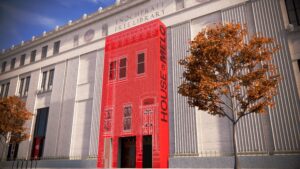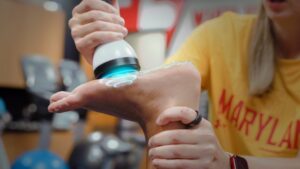Wilmington, NC October 24, 2025 –(PR.com)– A Dream Ignites an Industry: How Wild Azalea Boutique Is Upending the Boutique World
A sudden success that feels anything but accidental
What started as one woman’s quiet, stubborn dream has become a cultural ripple with the force of a tidal wave. Wild Azalea Boutique, the online shop founded by Ashlyn Fraze, opened its digital doors and—almost overnight—rewrote expectations about what a modern boutique can be. With smart curation, a denim-first edit, and a voice that reads like a trusted friend, Wild Azalea has not only attracted shoppers; it has unsettled competitors, inspired copycats, and forced traditional boutiques to rethink everything from inventory strategies to customer care.
This is a story about a dream realized and about an industry startled awake. Ashlyn always wanted a boutique, and when Wild Azalea launched, it did more than satisfy that yearning: it revealed a playbook other retailers had overlooked, and the industry noticed fast.
The opening that refused to be ordinary
When Wild Azalea launched, the site looked familiar to anyone who loves thoughtful curation: clean photography, clear fit notes, and a styling voice that respected real-life wardrobes. But the execution was sharper than the sum of its parts. Ashlyn built a nimble, customer-first machine around four pillars: product resonance, denim expertise, storytelling, and service. The boutique’s initial lineup—anchored by Judy Blue Jeans and Risen Jeans for denim; Myra for tactile, artisanal handbags; and Umgee for trend-forward, wearable knits—felt both timeless and urgently now.
Within days of launch, product pages that read like conversations started appearing in screenshots across social feeds. Customers posted before-and-after outfit shots, tagged friends, and asked where they could get the pieces. Orders moved from tentative to repeated purchases; what began as curiosity quickly became habit. The boutique wasn’t just selling clothes—it was supplying confidence and solving wardrobe problems customers did not know how to articulate until they shopped.
Why Wild Azalea’s success is a problem—for some retailers
Wild Azalea’s rise reveals a gap in how many boutiques still operate. For decades, boutique success leaned on foot traffic, local loyalty, and carefully managed in-store experiences. Wild Azalea turned that script on its head by building those same relational elements into a purely online format, and doing so faster, cheaper, and with a clarity rivals find hard to replicate.
Key irritants for legacy boutiques:
Inventory nimbleness: Wild Azalea moves quickly from trend testing to replenishment, prioritizing low-risk buys that have clear styling potential, which compresses the typical buy/sell cycle and reduces markdown dependency.
Messaging that feels human: Ashlyn’s copy treats customers like friends, not conversion funnels, forcing competitors to ask whether their own messaging sounds like marketing or like a person.
Denim as an anchor: Many boutiques sell denim as an afterthought; Wild Azalea made it a reason to shop, with Judy Blue and Risen Jeans offerings that solve the most persistent fit complaints customers voice online.
Accessible luxury via Myra: Artisanal touches matter, and the Myra line offers texture and story at price points that feel like smart investments rather than impulse buys.
Trend with utility via Umgee: Umgee’s knitwear and casual staples sit at the intersection of style and wearability, demonstrating that trendiness need not be fleeting.
For boutiques who still rely on seasonal buys and big markdown cycles, Wild Azalea’s approach looks like a challenge with teeth.
The founder’s playbook: instinct, discipline, and relentless empathy
Ashlyn’s story is the connective tissue behind the boutique’s meteoric rise. She always wanted a boutique; that desire wasn’t vanity—it was the seed of a disciplined approach to retail that prioritized the shopper’s actual life. The playbook is simple to read, hard to implement: buy fewer, buy better, communicate like a neighbor, and pivot fast when customers speak.
Empathy-first curation: Each piece on Wild Azalea is selected to solve a problem—a denim cut that flatters, a Myra bag that gives an outfit a new center of gravity, an Umgee top that layers without bulk.
Clarity over noise: Product pages remove guesswork with clear fit notes, multiple real-life images, and styling pairings that create immediate outfit possibilities.
Feedback loops: Early customers were treated as co-designers; their input informed restocks and assortment tweaks, accelerating product-market fit beyond what traditional buying calendars allow.
Story as conversion: Ashlyn’s founder story—rooted in wanting a boutique—became a mobilizing narrative that customers could buy into. It wasn’t a slogan. It became proof.
That combination converted casual shoppers into evangelists. Social proof arrived organically and rapidly, and with it came the pressure on competitors to answer a new set of market expectations.
Dramatic market effects: copycats, partnerships, and short circuits
Within weeks, the boutique space felt different. Competitors who had once treated curated ecommerce as a boutique hobby suddenly accelerated digital investments. Some of the more entrepreneurial retailers hurried to copy Wild Azalea’s editorial approach; others tried to fast-follow with denim-focused edits or artisanal accessory drops. The effects were visible in three ways:
Copycat editing: Several small boutiques pivoted to denim-forward assortments and Myra-style artisanal bags, posting similar product narratives and “fit-first” copy; the market became louder overnight.
Partnership overtures: Established brands and category specialists who saw Wild Azalea’s traction began to reach out with partnership ideas, capsule collections, and influencer collaborations—an admission that their channels needed freshness.
Operational strain: Suppliers and small-batch manufacturers suddenly faced heightened demand for the kinds of pieces Wild Azalea championed, creating allocation problems for boutiques that hadn’t planned for surge-level interest.
Not all these ripples were healthy. For some boutiques, the scramble to replicate Wild Azalea led to diluted assortments and confused customers. For others, it provided a lesson: authenticity cannot be manufactured overnight. Ashlyn’s advantage wasn’t only curation; it was the coherence of a vision born from years of wanting to create this particular kind of boutique.
A consumer revolt against empty aisles and bad fit
The dramatic part of Wild Azalea’s story is not merely that it grew quickly. It’s that consumers loudly rewarded substance where they had been offered spectacle. Online shoppers are tired of brands that prioritize hype over utility. Wild Azalea’s growth was a repudiation of inflated launch tactics, overpromised garments, and hair-trigger trends that leave closets full of “almost” clothes.
Instead, customers rewarded:
Real size guidance that reduced return anxiety.
Denim that finally matched the sizing charts.
Handbags with tangible texture and character rather than glossy, mass-produced sameness.
Knitwear that draped, not clung.
The boutique’s early community voiced a clear preference: give us clothes that work, explain how they work, and treat us like customers who deserve thoughtful answers. That vocal consumer base became Wild Azalea’s most influential marketing channel, and their testimonials spread faster than any paid campaign could.
The critics, the praise, and the inevitable skepticism
Not everyone cheered. Critics argued Wild Azalea’s surge was a phenomenon of timing and social virality, destined to fade as inventory cycles smoothed out and competitors learned the playbook. Others questioned whether an online-first boutique could maintain the intimacy of a true brick-and-mortar experience as it scaled.
But even skeptics admit something fundamental changed: Wild Azalea forced a conversation about what boutique retail should prioritize. The boutique’s early metrics—high repeat rates, low return ratios for select SKUs, and a customer acquisition cost that fell as word-of-mouth grew—created a data-backed argument that the “friend-as-seller” approach wasn’t only charming; it was profitable.
The industry adapts: faster buys, smarter storytelling, and rethought margins
What happens next is a competitive crucible. Boutiques that survive will do more than copy Wild Azalea’s aesthetic. They will adopt the mechanics that made it successful: responsive buying cycles, editorial-first product pages, and service that anticipates fit concerns before they become reasons to return items. The industry will likely see:
A proliferation of denim-led mini-categories as boutiques discover denim’s role in driving basket size and repeat visits.
Elevated storytelling standards where product copy becomes a competitive moat rather than an afterthought.
Reconfigured margins: retailers will be willing to trade some unit margin for stronger lifetime customer value, recognizing that a better first experience yields repeat business.
Wild Azalea’s success is not a single tactical advantage; it’s a cultural nudge. Retailers who adapt will survive. Those who cling to old rhythms may find their foot traffic—literal or virtual—eroding.
What this means for shoppers: more choices, better clarity
Customers are already the short-term winners in this shakeup. The pressure Wild Azalea applied to the market means more choices that are intentionally curated, clearer fit and composition details, and an expectation of service that actually helps shoppers. As boutiques compete for the same discerning buyer, the result should be better product quality, smarter storytelling, and faster responsiveness when items don’t fit or disappoint.
Yet shoppers should watch for fatigue: when everyone chases the same playbook, differentiation becomes harder. The boutiques that continue to win will be those that keep authenticity at their core, not those that simply mimic the look and feel of success.
The founder’s dream, amplified
At the center of this disruption is a personal story: Ashlyn always wanted a boutique. That simple truth matters because it shaped decisions in ways spreadsheets never could. The boutique’s tone, its curation, and its insistence on clarity all read like the handiwork of someone who has long imagined the space she was about to build.
The drama of Wild Azalea’s rise is not theatrical contrivance; it’s a reminder that markets can flip when someone builds from a place of genuine intention. In this case, that intention translated into an online boutique that felt local, personal, and smarter than the sum of its inventory.
Final act: the industry has been warned
Wild Azalea Boutique is more than a fast-rising retailer. It is a blueprint and an ultimatum. The boutique space can either treat this moment as a warning—update practices, honor shoppers, and center product clarity—or dismiss it and watch customers migrate to where their time and trust are rewarded.
Ashlyn turned the dream of always wanting a boutique into an operational and cultural challenge for an entire industry. The boutique world is responding with both admiration and anxiety. Either way, Wild Azalea’s launch did what true disruption does: it made the comfortable uncomfortable and the overlooked painfully visible.
The question now is not whether Wild Azalea will sustain its momentum. The question is which boutiques will rise to the challenge and which will be left explaining why they ignored a dream that, when executed with care, turned into a revolution.
Contact Information:
Wild Azalea Boutique
Ashlyn Fraze
910-547-2048
Contact via Email
wildazaleaboutique.com
Read the full story here: https://www.pr.com/press-release/951831
Press Release Distributed by PR.com



















